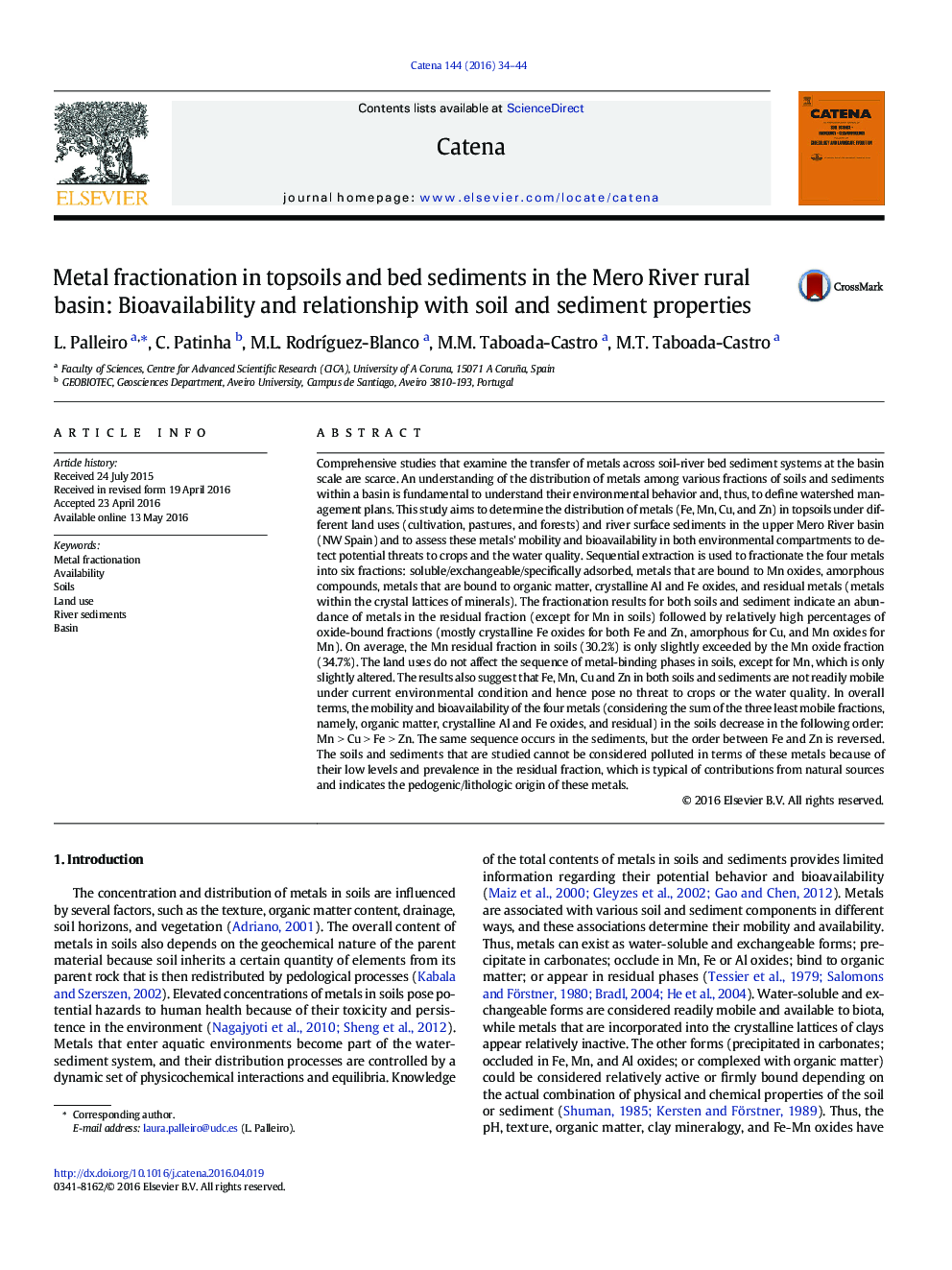| کد مقاله | کد نشریه | سال انتشار | مقاله انگلیسی | نسخه تمام متن |
|---|---|---|---|---|
| 4570826 | 1629208 | 2016 | 11 صفحه PDF | دانلود رایگان |
• We assess metal fractionation (Cu, Zn, Fe, Mn) in soils and river bed sediments.
• Land uses did not affect the sequence of metal-binding phases in soils, except Mn.
• The examined metals are not readily mobile under current environmental conditions.
• Mn is potentially more bioavailable than the other metals that are examined.
• The soils and sediments cannot be considered polluted in terms of Cu, Zn, Mn and Fe.
Comprehensive studies that examine the transfer of metals across soil-river bed sediment systems at the basin scale are scarce. An understanding of the distribution of metals among various fractions of soils and sediments within a basin is fundamental to understand their environmental behavior and, thus, to define watershed management plans. This study aims to determine the distribution of metals (Fe, Mn, Cu, and Zn) in topsoils under different land uses (cultivation, pastures, and forests) and river surface sediments in the upper Mero River basin (NW Spain) and to assess these metals' mobility and bioavailability in both environmental compartments to detect potential threats to crops and the water quality. Sequential extraction is used to fractionate the four metals into six fractions: soluble/exchangeable/specifically adsorbed, metals that are bound to Mn oxides, amorphous compounds, metals that are bound to organic matter, crystalline Al and Fe oxides, and residual metals (metals within the crystal lattices of minerals). The fractionation results for both soils and sediment indicate an abundance of metals in the residual fraction (except for Mn in soils) followed by relatively high percentages of oxide-bound fractions (mostly crystalline Fe oxides for both Fe and Zn, amorphous for Cu, and Mn oxides for Mn). On average, the Mn residual fraction in soils (30.2%) is only slightly exceeded by the Mn oxide fraction (34.7%). The land uses do not affect the sequence of metal-binding phases in soils, except for Mn, which is only slightly altered. The results also suggest that Fe, Mn, Cu and Zn in both soils and sediments are not readily mobile under current environmental condition and hence pose no threat to crops or the water quality. In overall terms, the mobility and bioavailability of the four metals (considering the sum of the three least mobile fractions, namely, organic matter, crystalline Al and Fe oxides, and residual) in the soils decrease in the following order: Mn > Cu > Fe > Zn. The same sequence occurs in the sediments, but the order between Fe and Zn is reversed. The soils and sediments that are studied cannot be considered polluted in terms of these metals because of their low levels and prevalence in the residual fraction, which is typical of contributions from natural sources and indicates the pedogenic/lithologic origin of these metals.
Journal: CATENA - Volume 144, September 2016, Pages 34–44
